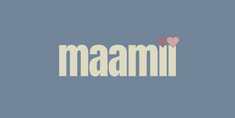First Aid for Babies & Toddlers: What You Need to Know in an Emergency
The first months of a baby’s life are exciting – but also full of uncertainties. As parents, grandparents or caregivers, we want to provide protection and safety. Yet in emergencies, many of us don’t know how to react.
⚠️ Important note: This article is for awareness only. It does not replace a certified first aid course and does not claim to be complete. Please make sure to attend a first aid course for babies and children (e.g. with Samaritans Switzerland or the Swiss Red Cross). We accept no liability for the information provided here.
1. Choking – act immediately & call 144
Babies put everything in their mouths – the risk of choking is high.
Measures for choking (< 1 year):
-
Call 144 immediately.
-
Place the baby face down on your forearm, head lower than the body.
-
Give 5 firm back blows between the shoulder blades with the flat of your hand.
-
If this doesn’t help: give 5 chest thrusts using two fingers on the breastbone.
-
Alternate between back blows and chest thrusts until help arrives.
👉 For children over 1 year: the Heimlich maneuver is used (only by trained persons).
⚠️ This is only an overview – in a first aid course you practice the correct technique hands-on.
2. High fever
-
Check the temperature.
-
Keep the room cool, avoid overdressing.
-
Ensure enough fluids.
-
Over 39 °C or if unusual behavior occurs → contact a doctor.
3. Falls
Babies and children fall often – while crawling, learning to walk or playing. Most falls are harmless, but careful observation is important.
Measures after a fall:
-
For babies (< 1 year):
-
Go to the baby immediately and check if it reacts or is unconscious.
-
If unconscious → call 144 immediately and start first aid.
-
If drowsy, vomiting or showing unusual behavior → contact a doctor.
-
-
For toddlers (> 1 year):
-
If no immediate danger: wait briefly to see if the child stands up on their own. This shows if injuries or pain are present.
-
Crying is often a good sign, as it shows reaction.
-
Warning signs: unusual quietness, confusion, vomiting, balance problems → doctor/emergency.
-
4. Electric shock
-
Disconnect the power source.
-
Do not touch the child directly if still in contact with electricity – use non-conductive material.
-
Always have a doctor check, even if no injuries are visible.
5. Seizure
-
Place the child on a soft surface, don’t hold them down.
-
Observe duration.
-
Call 144 immediately.
-
Do not put anything in the mouth.
6. Poisoning
Babies and toddlers explore the world with their mouths. Medicines, cleaning products or plants can be life-threatening.
Measures in case of poisoning:
-
Call 145 immediately – the 24/7 emergency number of Tox Info Suisse.
-
Do not induce vomiting! (may worsen the situation).
-
Keep product/container ready for information.
-
If unconscious or trouble breathing → call 144 as well.
7. Learn first aid – a responsibility for everyone
Not only parents should be prepared. Grandparents, babysitters, childminders or friends who look after children should also know how to act in emergencies.
👉 Providers in Switzerland:
⚠️ Once again: This article does not replace a course. Only hands-on training gives you the confidence to act safely in an emergency.
Conclusion
Emergencies with babies and toddlers can happen anytime – from choking to fever to poisoning. No one wants to be unprepared.
-
Call 144 immediately in life-threatening situations.
-
145 – Tox Info Suisse in case of poisoning.
-
Know the first aid basics.
-
Most importantly: take a first aid course for babies & children.
This knowledge gives you confidence – and can save lives.







